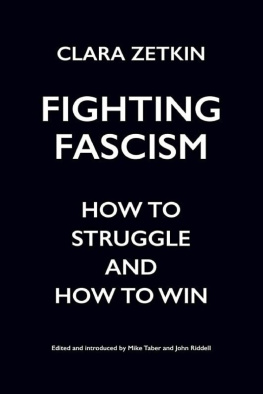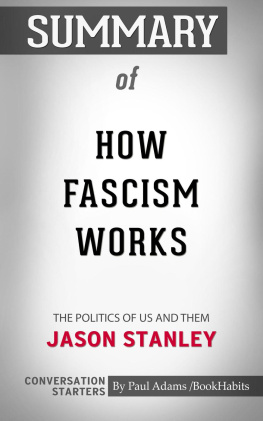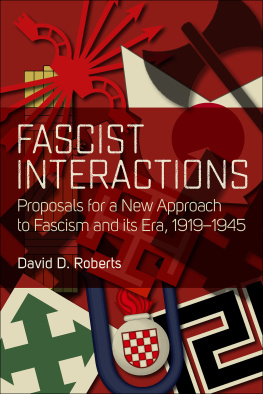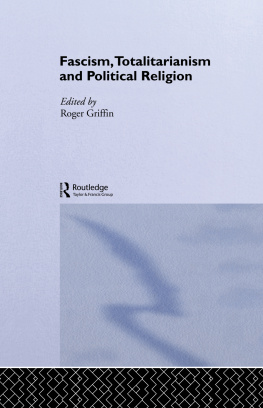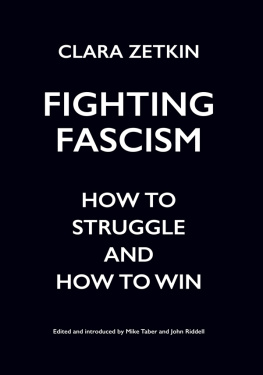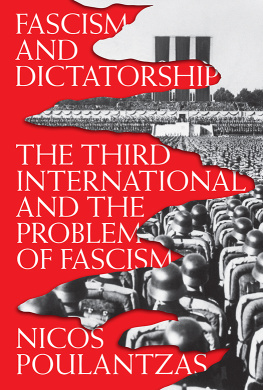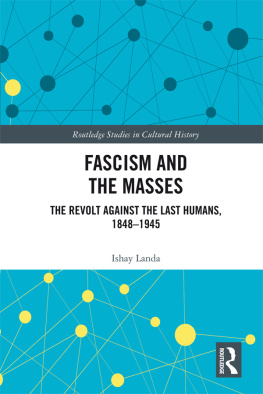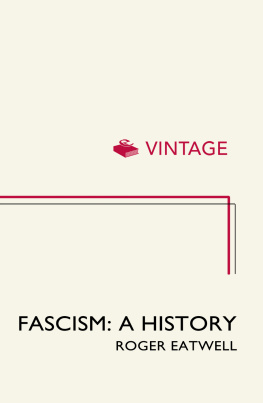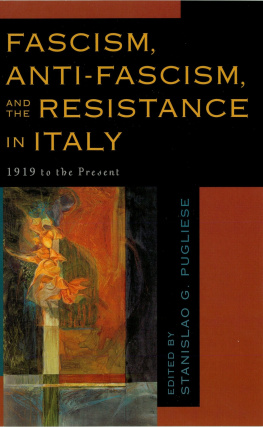FIGHTING
FASCISM
FIGHTING
FASCISM
HOW TO STRUGGLE
AND HOW TO WIN
CLARA ZETKIN
Edited and introduced by Mike Taber and John Riddell

Haymarket Books
Chicago, Illinois
2017 Mike Taber and John Riddell
Published in 2017 by
Haymarket Books
P.O. Box 180165
Chicago, IL 60618
773-583-7884
www.haymarketbooks.org
ISBN: 978-1-60846-879-9
Trade distribution:
In the US, Consortium Book Sales and Distribution, www.cbsd.com
In Canada, Publishers Group Canada, www.pgcbooks.ca
In the UK, Turnaround Publisher Services, www.turnaround-uk.com
All other countries, Ingram Publisher Services International,
This book was published with the generous support of Lannan Foundation and Wallace Action Fund.
Cover design by Josh On.
Library of Congress Cataloging-in-Publication data is available.

INTRODUCTION
Seldom has there been a word more bandied about, yet less understood, than fascism.
For many, the fascist label is simply an insult, directed against particularly repellent and reactionary individuals or movements. Its also customarily used as a political description of right-wing military dictatorships.
The term took on new significance during the 2016 US presidential election, in which the ultimate victor Donald Trump was routinely compared to Benito Mussolini and other fascist leaders. Fascist comparisons are not new in American politics, stated an article in the May 28, 2016, New York Times. But with Mr. Trump, such comparisons have gone beyond the fringe and entered mainstream conversation both in the United States and abroad.
Although these particular comparisons are overdrawn and imprecise, all allegations of fascism must be examined seriously. Working people and the oppressed have every reason to fear the endemic racism, abolition of labor and civil rights, brutal repression, and mass murder that characterize fascism.
While resemblances on some level can undoubtedly be found among most rightist movements and regimes, fascism itself is a very specific phenomenon, with unique features. Understanding the characteristics and dynamics of fascism is not just an academic exercise. Doing so is essential for being able to combat it.
This short book, containing a report and resolution by Clara Zetkin at a 1923 leadership meeting of the Communist International, presents a far-reaching analysis of what was then something entirely new on the world scene.
Many readers will be struck by the clarity and foresight of Zetkins assessment, delivered at a time when fascisms emergence was still a mystery to most observers. Reviewing it almost a century later, one can appreciate her accomplishment in outlining, at this early date, a consistent Marxist position on the nature of fascism and how to fight it.
Fascisms emergence
The origins of fascism can be found in postWorld War I Italy. Organized by Benito Mussolini during a period of social crisis in 1919, the Fasci Italiani di Combattimento arose as a reaction to the rising movement of the proletariat, that is, the social class of those who depend on sale of their labor power for their means of subsistence.
During this time Italian workers, inspired by the victory of the Russian Revolution and battered by Italian capitalisms postwar crisis, were marching forward in militant struggle. Throughout all layers of Italian society, expectation was high that the Italian Socialist Partythen a member of the Communist Internationalwas on the verge of coming to power.
The proletarian upsurge reached a high point in September 1920. During that month over half a million workers, led by the metalworkers, seized factories throughout Italy. Workers began to organize production under the leadership of factory councils, and in many places they formed Red Guards to defend the seized factories. The strikes spread to the railways and other workplaces, and many poor peasants and agricultural workers carried out land seizures. Effective appeals were made to soldiers, as fellow workers in uniform, to refuse to obey any orders to attack the factories. In face of this seemingly unstoppable wave, the capitalist class and its government were paralyzed with indecision and fear. A revolutionary situation was unfolding, with the conquest of political power on the agenda.
But the Italian Socialist Party and the main trade union federation under its influence refused to see this month-long revolutionary movement as anything more than a simple union struggle. With such a mindset, the union leadership eventually directed the workers to leave the factories in exchange for a package of enticing but empty promises by the capitalistswho by that time were willing to sign anything provided they could get their factories back. Italian working people, who had hoped and expected that the end of capitalist rule was near, abandoned the factories in dejection.
The failure of the factory occupation movement led to widespread demoralization within the working class. The Fasci stepped up recruitment and carried out an escalating wave of attacks against the labor movement, receiving growing financial support from leading capitalists and protection from police and other sectors of the Italian state. In 1921 and 1922 several thousand workers and peasants were murdered in fascist punitive expeditions. Hundreds of labor halls and union headquarters were destroyed.
Rapidly assuming the character of a mass movement, the fascists were able to take control of the government at the end of October 1922, with Mussolini becoming prime minister. Once in power, fascism proceeded to crush the unions entirely, along with all other independent workers organizations.
Encouraged by the Italian fascist victory, similar movements arose in other European countries, the strongest being in Germany. Fascist-type formations were also seen in Poland, Czechoslovakia, Austria, and elsewhere.
Recognizing a new phenomenon
As with most new social phenomena, it was not immediately apparent what was involved. Initially, many tended to lump fascism together with other instances of counterrevolutionary violence and terror.
In the years after the First World War, such terror was indeed widespread. In Hungary, a defeated revolution that briefly held power in 1919 was followed by 5,000 executions and 75,000 jailings. In Finland, where a civil war had taken place, the toll was 10,000 shot and 100,000 sent to concentration camps. Comparable instances of what became known as white terror were seen in other countries.
While the Italian fascists use of counterrevolutionary violence was certainly analogous, the phenomenon of fascism involved something more. Uncovering its true nature was a task that fell to the Communist International.
Founded in 1919 under the impact of the Russian Revolution, the Communist International (Comintern) was something entirely new: a movement dedicated to discussing how the working class could overthrow capitalist rule, and organizing to do so. Under Lenin, the Cominterns congresses and meetings were schools of revolutionary politics.
The Comintern had its first organized discussion of fascism at its Fourth Congress in November 1922. It was not particularly fruitful, however. A report by Italian Communist Amadeo Bordiga, while describing important aspects of Mussolinis movement in Italy, was less successful in uncovering fascisms nature, stressing instead the similarities between fascism and bourgeois democracy and predicting that Italian fascism would not last long. Neither Bordigas report nor the discussion that followed paid much attention to the struggle against fascism.

